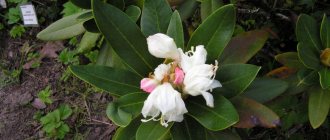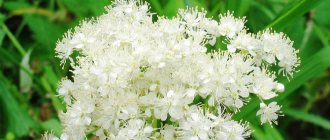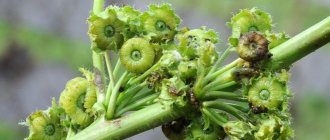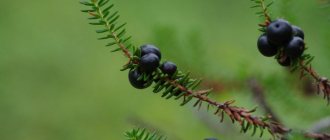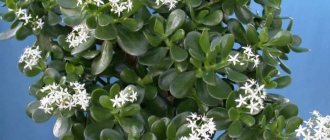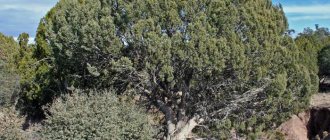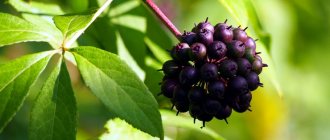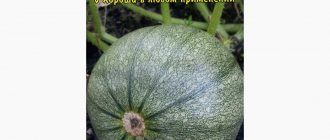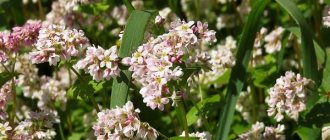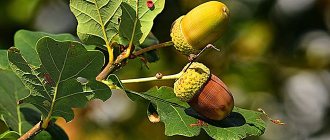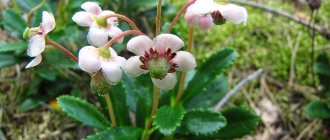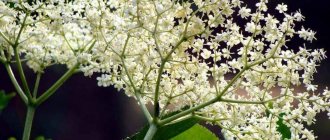The name Melilot officinalis comes from Greece and is translated as “honey lotus”. For a long time in Russia, the plant was used as animal feed, collected by healers to make decoctions and infusions, and called: sweet clover, burkun or bottom grass. This is an excellent honey plant that helps in the complex therapy of a large number of diseases and is an excellent green manure. Among medicinal plants, sweet clover grass is one of the leaders. Its healing qualities in folk medicine have proven its high effectiveness many times. You can learn more about the plant on the portal Agronom.guru
Sweet clover
Description of the plant
The biennial is easy to care for, the plant has several species, it grows all over the world and, if desired, can grow in the countryside.
The plant is a perennial belonging to the legume family, subfamily Papilaceae. This type of cultivated plant has grown over the years to several dozen subspecies, but the yellow and white sweet clover are the most in demand in alternative medicine.
A plant with a straight stem reaching 0.5-2.5 m. The branches start approximately from the middle part of the stem, the foliage is alternate, collected in 3 pieces. The flowers are yellow, pendulous, in multiple racemes, 150 mm in size.
The fruits are beans that consist of 1-2 seeds. Yellow sweet clover smells very nice. The remaining types are odorless and should not be used in alternative medicine. The perennial has a fairly developed rhizome-stem, a bushy stem and many small, oval-shaped, elongated, carved leaves on shortened petioles. Color begins in the summer season, multi-flowered racemes include small flowers, approximately 50 mm in size. The fruits are small.
Yellow clover
White clover
Types and varieties
Two types of sweet clover are most often grown in culture.
White clover (Melilotus albus)
or burkun, gunba, gunoba, male sweet clover, verkin grass - a biennial plant with a height of 30 to 150 cm, a silage and pasture crop with pinnate leaves, subulate stipules and axillary inflorescences of white flowers of the moth type. Unlike other honey plants, white clover produces nectar even in drought, attracting bees with the smell of hay. Under natural conditions, white sweet clover is found in ravines, on slopes and dry wastelands, along the edges of roads and fields in Ukraine, Belarus, Moldova, Kazakhstan, Central Asia, Siberia and the Caucasus. The following varieties of white sweet clover are grown in culture:
- Volodushka: cultivation, properties, types
- Medet is an early ripening variety of the Siberian ecotype, reaching a height of 110-120 cm. Its stems are coarse, of medium thickness, the flowers are large, white, forming a narrow long raceme. The plant is winter-hardy, drought- and salt-resistant, and is not affected by diseases or pests;
- Frost is a variety with good bushiness and green bare stems of medium coarseness. Its leaves are trifoliate, bare, green, slightly serrated. White flowers form a multi-flowered loose elongated raceme. The beans are elliptical. The variety is susceptible to weevil, but is resistant to powdery mildew;
- Chermasan is an early ripening variety up to 2 m high with rough, hairless stems and medium-loose inflorescences 18 cm long, consisting of white flowers. The beans are elliptical, dark gray in color;
- Steppe is an early-ripening, productive, drought-resistant variety with straight, coarse, short-haired stems at the top and bare at the bottom, height from 145 to 170 cm. The leaves are trifoliate, round, with jagged edges, bare, light green in color with a faint waxy coating. The inflorescence is a loose axillary raceme, the fruit is a single-seeded or two-seeded elliptical bean of straw-yellow color;
- Volzhanin is a drought-resistant and salt-tolerant productive variety that is not affected by powdery mildew and does not suffer from recurrent spring frosts. This is a non-lodging upright bush with medium-coarse branched stems 165-250 cm high. The beans of this variety are dark gray, single-seeded or two-seeded. Seeds are oval, yellow.
In addition to those described, such varieties of white sweet clover are grown as Lucerne-shaped 6, Srednevolzhsky, Povolzhsky, Obsky giant, Om, Sayansky, Sretensky, Meshchersky 99, Rybinsky, Nemyugyunsky, Bulat, Diomede and others.
Yellow clover (Melilotus officinalis)
or medicinal sweet clover, or medicinal clover, which is popularly called burkovina, vargun, wild hop, wild buckwheat, bottom, hare's chill, sticky, groundsel and moth grass, is widely distributed in nature in Ukraine, Belarus, Central Asia, Western Siberia and Caucasus. It grows along roads and fields, among bushes, along ravines, on the edges of forests, in meadows and in young plantings. This is a biennial herbaceous plant with a tap root having numerous branches, a straight stem 1.5-2 m high, lignified in the lower part, alternate long-petiolate trifoliate leaves, bluish-green and serrate-toothed along the edges of which the leaves have an oblong-ovate shape. The yellow flowers form multi-flowered racemes 5-7 cm long. The fruits of the plant are transversely wrinkled brown beans containing smooth, oval, yellow or yellow-brown seeds that ripen in August-September. The most commonly grown varieties of yellow sweet clover are:
- Sarbas is a high-yielding, cold-resistant and drought-resistant mid-season variety that develops intensively in the spring and grows quickly after mowing. The plant is quite resistant to powdery mildew and is not damaged by seed pests;
- Koldybansky is a drought-resistant variety with a slightly spreading bush, rough stems reaching a height of 80 to 120 cm, and small seeds. It is one of the best honey plants;
- Ishimsky early is a winter-hardy, salt- and drought-resistant, early-ripening, high-yielding variety that is not damaged by powdery mildew and seed pests. It is an erect bush of medium bushiness, about 80 cm high;
- Kokshetau is a winter-hardy, salt- and drought-resistant hybrid that produces a high yield of green mass and honey of excellent quality;
- Omsky is an early ripening variety with yellow flowers and large two-seeded beans.
Chemical composition
The main healing qualities of the plant are associated with the presence of coumarin, a camphor-like aromatic substance that is formed from glycosides, which has a positive effect on memory and concentration.
The element also helps eliminate seizures, eliminates anxiety and depressive states, normalizes blood flow in the brain and gastrointestinal tract, and increases the contractile force of the myocardium.
In addition, the composition of sweet clover contains:
- Vitamin C. Antioxidant, immune stimulant and regulator of oxidation and reduction processes.
- Vitamin B4. Normalizes liver functioning.
- Saponins. They soften sputum and remove mucus, providing a sedative, anti-sclerotic, and diuretic effect.
- Carotene. Takes part in protection against toxins.
- Tocopherol. Provides antioxidant effects and rejuvenates.
- Dicumarol. Thins the blood and protects against blood clots.
- Protein. Catalyzes a number of chemical reactions in the human body.
- Fiber (about 25%). Removes products of metabolic processes.
Sweet clover also contains:
- Tannins. Eliminate inflammation, have a bactericidal, astringent effect.
- Cymarin is a cardiac glycoside.
- Resins. Promote wound healing and provide anti-inflammatory effects.
- Flavonoids. Helps rid the body of free radicals and radioactive elements.
- Minerals. Take part in metabolic processes.
- Essential oil (about 0.01%). An oil-like, actively evaporating substance. Provides an analgesic effect, is an antiseptic, and eliminates inflammation.
- Sugars, mucus, fat-like elements (about 4.3%).
Most of the beneficial substances are formed in medicinal concentrations only after the sweet clover plant is cut and dried. Dry raw materials are more effective than freshly harvested ones.
Sweet clover contains many valuable components
Pharmacological properties
The herb Melilot officinalis has certain pharmacological qualities. These include the following:
- have a calming effect on the central nervous system;
- stop seizures;
- lower blood pressure;
- increase the contractile function of the heart and the minute volume of the heart muscle;
- normalize the blood supply to the heart, brain, and peritoneal organs;
- reduce the amount of edema;
- eliminate inflammation.
The active elements of sweet clover that are present in the plant are biostimulants.
In tests on experimental mice, it was proven that the use of an aqueous extract of a medicinal plant makes it possible to prolong the life of rodents after administering increased dosages of strychnine.
Also, during therapy with sweet clover in mice, an increase in the number of leukocytes in the bloodstream was found (mainly due to granulocytes, and to a lesser extent due to lymphocytes) with an increase in their phagocyte activity.
Heart disease - indication for using sweet clover
Why is it useful?
You need to know the properties of sweet clover. Solutions and medications containing the plant have the following beneficial qualities:
- antibacterial;
- enveloping;
- antispasmodic;
- fibrinolytic;
- blood thinners;
- expectorants;
- painkillers;
- diuretic;
- sedatives;
- anticoagulant;
- hypotensive;
- laxatives;
- anti-inflammatory;
- general strengthening;
- astringents;
- softening.
The raw material of beneficial sweet clover is not used as the main treatment, only as a supplement to traditional medicine methods.
Sweet clover has numerous effects on the human body
When to use
Today, the medicinal plant is used in the treatment of various pathologies. Application is relevant when the following are observed:
- convulsions;
- headache;
- overexcitability;
- neurasthenia;
- melancholic states;
- sleep disorders;
- vascular thrombosis;
- ischemia;
- cardiospasms;
- hypertension;
- angina pectoris;
- thrombophlebitis;
- atherosclerosis;
- brain nutrition problems;
- varicose veins
For headaches, sweet clover is an excellent medicine.
Sweet clover is also used for:
- colds;
- cystitis;
- ARVI;
- cough;
- chronic long-term bronchitis;
- bladder diseases;
- gastritis;
- BPH;
- pain in the intestines;
- pancreatitis;
- flatulence;
- decreased libido;
- prolonged inflammation in the body;
- rheumatism;
- mastitis;
- decreased immunity;
- infectious pathologies;
- metabolic problems, especially fat metabolism;
- pathologies of the thyroid gland;
- menstruation disorders;
- dropsy in men;
- abscesses;
- severe menopause;
- lactation problems;
- adnexitis;
- infertility;
- joint diseases.
Sweet clover is an effective remedy for pathologies of the digestive tract.
The medicinal plant is used to make a green adhesive plaster (calluses and abscesses), which gives a positive effect for skin pathologies that occur with inflammation and suppuration.
Medicinal preparations based on the flowers of a medicinal plant distract, irritate, cleanse, eliminate inflammation, and soften. They are effectively used for external therapy.
The following pathological conditions are treated:
- boils, ulcers;
- herpetic infection;
- otitis;
- rheumatic arthritis;
- oncological neoplasms;
- hemorrhoids and sphincter fissures.
Used to reduce pain and eliminate inflammation in rheumatic pathology, gout, and ovarian diseases in women.
Chinese healers use sweet clover raw materials to cure epidemic encephalitis.
Freshly harvested herbs are used in cooking, when preparing salad dishes. For seasoning for first courses, salads, drinks.
The honey product, which is obtained from the nectar of a medicinal plant, helps in the treatment of mastitis, respiratory diseases, and provides relief from arthritis.
Sweet clover honey is not only tasty, but also a healthy product
When not to take
The use of the herb, despite the large number of indications, must be careful, as there are nuances. The contraindications are as follows:
- individual intolerance to the components of sweet clover;
- kidney problems;
- hemocoagulation problems;
- hemorrhagic vasculitis;
- internal bleeding;
- tendency to bradycardia;
- hypotension;
- period of bearing a child.
Weed is not allowed for children under 18 years of age. Contraindications to the use of the plant are absolute, which means they cannot be ignored. In case of overdose and allergic reaction, the following side effects may develop:
- nausea;
- vomit;
- pain in the head;
- dizziness;
- drowsiness;
- general weakness;
- tremor.
In difficult situations, the following negative reactions may occur:
- liver lesions;
- hemorrhages in the muscles;
- hemorrhages in internal organs;
- hemorrhages under the skin;
- paralysis;
- damage to the central nervous system.
It is prohibited to take herbal remedies together with drugs that lead to decreased clotting.
It is important to remember that when sweet clover is used in large dosages, the herb becomes very poisonous.
If you are planning a surgical operation, you must stop using the plant 30 days in advance: problems may occur.
Aspirin and other anticoagulants are strictly forbidden to be combined with sweet clover
Collection and storage of sweet clover
Experts advise harvesting sweet clover during its flowering. To do this, using scissors or pruning shears, you need to cut off all the side shoots, as well as the apical racemose inflorescences. The resulting medicinal raw materials must be tied into not very large bundles, which should be hung from the ceiling in a dry and well-ventilated room, where they can dry very well. For these purposes, you can also use an electric dryer, and the temperature on it should be set to 40 degrees, neither more nor less. After the shoots are completely dry, they will need to be threshed thoroughly. Then the resulting mass of medicinal raw materials must be sifted using a sieve made of wire, which will allow you to remove large pieces of stems that need to be thrown away. The foliage, small shoots, fruits and flowers of sweet clover, which have a coumarin smell and a bitter-salty taste, have medicinal properties. To store dried sweet clover, tightly closed containers made of ceramic or glass are used. Medicinal raw materials of sweet clover should be stored in a dark and dry place.
What's special about grass
Sweet clover grows wild. This is an excellent forage crop, soil amendment and high-quality honey plant. Today, the medicinal qualities of the herb are especially valued, so in many places in the world the plant is specially grown and new varietal species are bred.
Types and varieties of sweet clover
The medicinal plant has more than 50 species. The most common are yellow, white and medicinal sweet clover. In addition to those listed above, annual and perennial varieties were cultivated.
White clover
The white variety is no less in demand than the yellow one. The plant crop is not afraid of hot weather; it is cultivated for silage and as feed for livestock.
The plant blooms in the summer season, blooms later than yellow sweet clover, but the color lasts longer, about 30 days.
Delicious honey is prepared from the plant; it produces a huge amount of nectar product in dry, hot weather.
If a plant crop is used for feed, it is necessary to comply with the agrotechnical requirements for cultivating grass, and monitor the condition of animals, since often, poor storage or spoilage can cause the death of livestock.
You can get more than 450 kg/ha of honey, the weight gain of the hive is approximately 3.9 kilograms.
White clover
Yellow clover
A biennial that grows well in the south of the country. It is not afraid of dry weather, has great endurance and tolerates the cold well.
The color is June, the flowers are bright yellow, densely arranged in baskets.
Sowing provides approximately 135 g/acre. Honey from 1 hectare 0.5 tons. From a hive 4.2 kg/day. As reviews have shown, yellow sweet clover is better suited for alternative medicine than other types.
Yellow clover
Habitat
This grass grows in the steppe and forest-steppe. You can find sweet clover throughout Europe. Loves the south, warm climate, Asian, Caucasian regions.
In our country it can be observed even in the west of Siberian territory.
A larger number of varieties grow in Ukraine. The plant is found in the American and New Zealand regions.
White and yellow sweet clover: what is the difference
In fact, there are much more types of plant crops, but white and yellow are the most in demand in Russia. The officially recognized medicinal plant is yellow sweet clover. The white variety can also be found in alternative medicine formulations for the same indications. White sweet clover, like yellow one, is a good honey plant.
Yellow clover
White clover
Botanical description
The sweet clover plant has a tap root, a branched stem, reaching a height of 50 cm to 2 m. On its shoots grow trifoliate leaves, like clover, with jagged leaflets. Small white or yellow sweet clover flowers are collected in loose apical elongated racemes. The fruits are naked oval beans 3-4 cm long. Sweet clover seeds remain viable for up to 14 years.
As a green manure, sweet clover improves the structure of the soil and saturates it with nitrogen, and when grown as feed, it forms a nutritious biomass rich in vitamins, which has a milk extracting and fattening effect.
The sweet clover herb, which has a pleasant aroma of fresh hay, is used to flavor tobacco, flavor soap, and to fix odors in the perfume industry.
- How to care for petunia after planting in the ground
Sweet clover is a honey plant, and one of the best: the amber or white honey of this plant smells like vanilla.
Where is it used?
The plant is listed in the directory of medicinal plant crops. Treats infectious lesions of the respiratory system, eliminates inflammation and has an antibacterial effect. Compositions with sweet clover herb help normalize sleep and even eliminate varicose veins.
For varicose veins
The plant reduces capillary permeability.
The main use of the herb is chronic venous insufficiency, varicose veins, thrombophlebitis lesions, hemorrhoidal pathological conditions.
Medicines from sweet clover eliminate pain, itching, swelling, heaviness in the lower extremities, and convulsive manifestations of venous insufficiency.
Sweet clover is indispensable for varicose veins
In folk medicine
The sweet clover plant is the first remedy for varicose veins and hemorrhoids. The drugs also have a positive effect when:
- convulsions;
- overexcitation of the central nervous system;
- insomnia.
Distracts, relieves pain and eliminates inflammation during mastitis, rheumatism, gout. Ointments, compresses are made from the plant and applied to problem areas.
In cooking
Among the Slavs, sweet clover is not such a popular herb in culinary significance. But among the residents of the Caucasus, this is a popular seasoning for fish and meat.
Freshly picked, dried foliage and flowers are pickled, canned, prepared into salads and first courses, and seasoning is added to cheese products and liqueurs.
As a spice, the raw material should be used sparingly, since its excess consumption can provoke side effects.
Salad with vegetables, tuna, arugula and sweet clover
How to grow sweet clover
Regarding the requirements for the cultivation of plant crops, to increase productivity, non-acidic soil and average moisture are needed, otherwise sweet clover is unpretentious in care and grows well both in nature and in the garden.
Planting in open ground
The predecessor for a plant crop can be any agricultural plant. Before sowing sweet clover seeds, the area for planting must be plowed, harrowed and rolled.
If the land is poor, nitrogen and minerals are added during plowing at a rate of 400 kg/ha of plantings.
Before sowing sweet clover, approximately 30 days before the start, you need to do the following:
- scarification;
- nitraginization;
- inoculation.
The above measures will increase the amount of harvest by 100%. The sowing of sweet clover seeds is carried out using seeders in the standard way, at the rate of 15.5 kilograms per hectare of plantings. The embedding depth is usually selected up to 30 mm.
Sweet clover seeds
How to take care of the garden
Caring for the plant is not difficult, the main thing is to protect the sweet clover from pests by treating the soil with herbicides in advance.
When fertilizing is done, it is necessary only in a situation where the plant crop grows very poorly; phosphorus and potassium are added at the rate of 45 kilograms per hectare of plantings.
The plant begins to bloom in the year following sowing. During the planting period, the sweet clover bears fruit, throwing out seed material.
The most suitable temperature for growth is +4 °C; seed germination is good and lasts up to a decade.
You can sow in the first days of spring; in the first year of growth, the rhizome of the plant and the stem part are actively formed, and the next year the seed material develops.
Leaves, flowering and fruits of sweet clover
Diseases and pests
This medicinal plant, like almost all agricultural crops, is affected by diseases, and parasites can also settle on it, destroying the plantings. Typically, sweet clover is affected by the following diseases:
- powdery mildew;
- ascochyta;
- peronosporosis;
- root bacteriosis;
- septoria;
- yellow mosaic.
Typically, bushes are affected by fungi only when they are cultivated in agricultural conditions that are not entirely suitable for the plant. It is recommended to spray diseased specimens with a fungicide solution as soon as possible. To kill parasites, experts recommend using systemic insecticides.
Ascochyta blight is a disease of many plants.
Collection and storage of sweet clover
For medicinal purposes, only the above-ground part of the plant is used, along with flowers and foliage, and side shoots.
Collect raw materials during coloring. It all depends on the region of growth - from the first days of summer until autumn.
It is allowed to store in linen bags, closed containers. You can store it for no more than 2 years.
Procurement of raw materials
The collected parts are laid out thinly and dried under the roof, outside, in the shade. The dried grass is crushed by hand, sifted and packaged.
Dried sweet clover
Features of sweet clover
The height of the branched stem of sweet clover can vary from 0.5 to 2 meters. Tap root. The leaf blades are trifoliate (similar to clover) and consist of serrated leaflets. The apical, loose, elongated racemes consist of small flowers of yellow or white color. The fruit is a naked bean, round in shape, and reaching 30–40 millimeters in length. The seeds remain viable for a relatively long time, more precisely, for 14 years.
Sweet clover is grown as a green manure because it helps improve the structure of the soil and saturate it with a substance such as nitrogen. It is also grown as a forage plant, because it forms a nutritious biomass that contains a very large amount of vitamins. This biomass has a fattening and milk-extracting effect. Also, this herb, which has a pleasant smell of fresh hay, is widely used to flavor soap, to flavor tobacco, and in the perfume industry it is used to fix aroma. This plant is one of the best honey plants. From the nectar collected from the flowers of such a culture, white or amber honey is obtained, which has a very pleasant vanilla aroma.
MALOLUT YELLOW HONEYPLANT || Useful properties and applications
Methods of preparation and use of clover
Decoctions, infusions, and ointments are made from medicinal herbs. It is also used internally, as food, and also with honey products, which are among the highest quality varieties of honey.
Decoction
You can brew the raw materials yourself. It is also included in herbal preparations used to treat abscesses. This is an excellent emollient, anti-inflammatory, and phlegm remover. It is taken for varicose veins, insomnia, and diseases of the respiratory system. It's easy to prepare:
- Take a spoonful of raw materials.
- Brew 250 ml of boiling water.
- Boil for 60 seconds.
- Let stand for 60 minutes.
- Filter.
The decoctions are consumed orally in a spoonful after meals three times a day. Otar is used externally as lotions and compresses.
Preparation for decoctions and infusions
Infusion
Several recipes for infusions have been developed. The coolest infusions are used externally. A weak infusion is prepared as follows:
- Take a spoonful of raw materials.
- Brew with boiling water.
- Let stand for 40 minutes.
- Filter.
The warm preparation is taken orally, 1/2 cup three times a day. It normalizes sleep well and calms the nerves.
Ointment
The ointment is made from rendered fat of pig, duck, goose, butter or Vaseline.
It can be used for mastitis, pathologies of the vascular system and joints, for hematomas, abscesses, and for the ripening of boils.
Prepare the ointment as follows:
- Take a spoonful of raw materials.
- Mix with half a glass of fat.
- Boil the mixture.
- Leave until cool.
The ointment is placed on gauze and applied to the wound site.
Sweet clover ointment
Sweet clover extract
To prepare the extract, you must use fresh white or yellow sweet clover leaves.
Algorithm of actions:
- take 50 g of fresh leaves;
- pour 500 g of vodka;
- leave to infuse for 15 days;
- strain the extract;
- take 15 drops.
Sweet clover dressings
To prepare dressings, it is useful to use dried white or yellow sweet clover. First you need to steam the herb, then apply it to the problem joints, and then cover the area with gauze.
Oil
To prepare medicinal oil you need:
- prepare 10 g of white or yellow sweet clover raw material;
- mix it with 100 g of vegetable oil;
- keep the mixture warm for 3 hours.
Useful oil with unique properties can be used to treat problem skin, for example, to get rid of boils.
Healing ointment
You can prepare a useful ointment in the following ways.
- Mix 2 tablespoons of powder from white or yellow sweet clover leaves with 50 g of Vaseline and apply to purulent wounds. The healing ointment will heal them quickly.
- Prepare white or yellow sweet clover flowers (50 g), grind them to a paste. Add 3 tablespoons of butter. Therapeutic ointment from the herb is used externally, for example, to get rid of inflammatory processes.
White and yellow sweet clover roots
The medicinal properties of the roots of the plant allow you to make a useful decoction:
- take 15 g of dry roots of white or yellow sweet clover;
- pour 1 cup boiling water;
- keep on fire for 10 minutes.
You can use 1 tbsp medicinal decoction. spoon for reception.
A decoction of white or yellow sweet clover solves the problem of flatulence and excessive gas formation.
Additional uses of sweet clover
White or yellow clover can be used in the following ways:
- as a concentrated solution that is added to the bath;
- as a concentrated solution for evening foot baths - such a product relieves swelling and fatigue;
- for rinsing the mouth during periostitis (use white or yellow sweet clover infusion);
- for the treatment of cracked nipples during breastfeeding (compresses with medicinal herbs are useful);
- for the treatment of mastitis (herbal compresses are also prepared).
Contraindications for sweet clover
Despite all its medicinal properties, white and yellow sweet clover contains poison. If you do not follow the dosage of using this herb and do not take into account contraindications, there is a risk of harming your body.
If a person does not comply with the dosage for the use of white and yellow sweet clover, then he runs the risk of encountering the following symptoms:
- drowsiness, fatigue, dizziness;
- migraine;
- painful sensations in the abdomen, problems with the gastrointestinal tract;
- problems sleeping, inability to fall asleep;
- hemorrhagic syndrome (bleeding is likely);
- burning, rash, itching and other manifestations of allergies;
- tachycardia, high blood pressure.
Contraindications for yellow and white sweet clover:
- bearing a child;
- low blood clotting;
- renal failure;
- hypertension;
- cardiovascular diseases;
- bleeding of internal organs.
The plant belongs to the category of poisonous, there are many contraindications for sweet clover, so before using drugs based on it, you need to discuss all the important nuances with your doctor. It is prohibited to exceed the dosage of yellow and white sweet clover. The doctor will independently prescribe the prescription and dosage of the medication. Medical instructions must be strictly followed.
Contraindications for sweet clover also include individual intolerance to the components of the drug.
If the doctor has prescribed the main therapy for the treatment of a particular disease, you cannot replace the drugs indicated by the specialist with medicinal herbs. Yellow and white sweet clover are only auxiliary elements of treatment; this plant can be used only after approval by a specialist.
If you adhere to the rules for using yellow and white sweet clover and take into account contraindications, then the treatment of diseases will be faster and more successful.
Use of yellow and white sweet clover for cosmetic purposes
Sweet clover has the following features:
- medicinal herb has an antioxidant effect and has antithrombotic properties;
- white and yellow sweet clover protects blood vessels and skin cells from negative influences from the outside world;
- The plant has an anticoagulant effect and relieves swelling.
How yellow and white sweet clover is used in cosmetology
Since the herb contains coumarins, when the raw material is fermented, these compounds are converted into dicoumarin. This is an effective anticoagulant that has remarkable tonic properties and is beneficial for blood vessels.
The herb extract has a soothing, astringent effect and, due to its anticoagulant characteristics, has a positive effect on the condition of blood vessels.
Products based on sweet clover improve blood circulation, help reduce swelling, eliminate vascular diseases, and have a positive effect on varicose veins and rosacea. If the blood vessels are too large and permeable, then the plant extract can solve these problems through vasoconstriction.
The plant extract is successfully used in cosmetology and dermatology. This drug reduces vascular permeability and blood viscosity, which helps get rid of swelling. If contraindications are observed, the use of the plant will improve the appearance.
In addition, the extract helps relieve spasms, tones veins, and has a lymphokinetic effect. When used, the oncotic pressure in the interstitial fluid decreases. As a result, medicinal cosmetics based on sweet clover have a lymphatic drainage effect and relieve swelling.
Sweet clover is successfully used in combination with other drugs. For example, a tonic solution based on sweet clover extract and rutin is popular. In addition to the usual positive properties of the herb, the unique characteristics of a bioflavonoid (vitamin P) are added, resulting in double protection for the blood vessels. Rutin is a vitamin: this antioxidant substance strengthens capillary walls and affects vascular permeability.
The combination of sweet clover and rutin allows you to reduce blood viscosity and bring the permeability of blood vessels and cell membranes to normal values. Ascorbic acid is often added to this combination. Active ingredients contribute to longer preservation of vitamin C in the body and its active manifestation as an antioxidant.
Sweet clover honey
A healing honey plant that produces a lot of nectar during flowering. The special structure of the flowers allows the nectar to persist even after a rainstorm and during dry weather.
From the nectar collected from 1 hectare of wild crops, pollinating insects produce 200 kg of honey product, and from 1 hectare of cultivated sweet clover - 600 kg. The products are of high quality, have an excellent taste, an amber or white shade, a refined aroma similar to vanilla. The product contains 39.59% fructose and 36.78% glucose.
In addition to honey, you can prepare healing pollen. The product is valued as a good medicine and helps with pathologies of the digestive system, high blood pressure, cough, migraine, neurosis, fatigue.
Massage with a honey product helps well with arthrosis and arthritis, but when the disease is in the acute stage, any massage is prohibited.
Sweet clover honey
